

In any production process, ‘raw material procurement’ is at the precursor stage and is thus crucial for any manufacturing unit! Raw material procurement is often perceived as a mundane process, but it actually plays a very critical role in business operations. This stage determines the overall success and profitability of an organization! Many businesses around plastic manufacturing keep their prices close to the material price, as volumes are large.
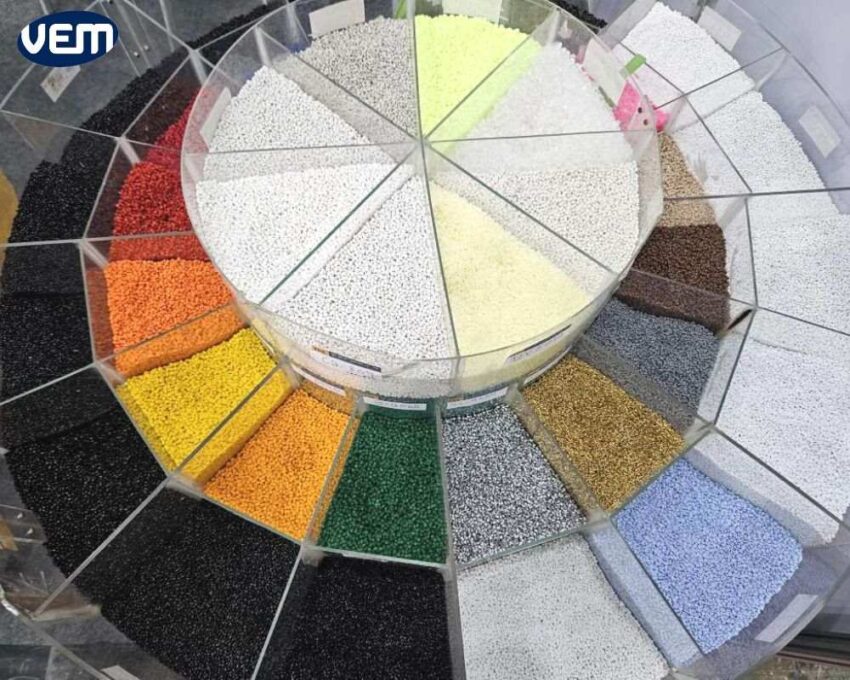
Raw material procurement refers to raw material acquisition for manufacturing products and parts. The goal of this process is to streamline the procurement of raw materials at all levels of the supply chain through demand forecasting, waste elimination, and efficiency improvement. It’s also imperative to derive a dynamic snapshot of your sourcing strengths and vulnerabilities in order to enable effective collaboration with contract manufacturers and raw material sources. In this article, we discuss raw material procurement in detail and how your business should improve efficiency in this segment.
You should note that purchasing and procurement are terms that are very often used interchangeably, but there is a distinct differentiation between the two! Purchasing refers to simply buying whereas procurement is a much broader term. It refers to not just purchasing materials but also includes shortlisting and negotiating with the vendors, sourcing the materials, and executing contract management.
The process of ‘raw material procurement’ includes identifying, acquiring, and securing materials that are necessary for manufacturing the parts. Material procurement includes researching, selecting, ordering, and paying for the raw materials that are required for manufacturing.
There are various types of materials and these materials can be obtained through various sources such as factories, mines, farms, suppliers, and independent vendors. The materials can be either purchased in bulk, or they can be purchased in smaller quantities.
This process requires thorough research as it requires procurement leaders to select suppliers that include not only accurate product specifications but also those that can meet tight deadlines. Procurement leaders use market research to find potential suppliers. In addition, they also contract with consulting firms to identify and evaluate suppliers’ suitability for a particular project. Thus, even though raw material procurement is perceived as mundane, it is actually a complex task that requires process owners to conduct thorough research.
The streamlining of the raw material procurement process helps to ensure that the products produced by an organization meet the safety standards, and customer requirements, and cost constraints.
An effective raw material procurement is a series of steps and can be carried out by following the below-mentioned steps. We have listed the steps that are broadly followed in most organizations. Let’s understand the basic steps further:
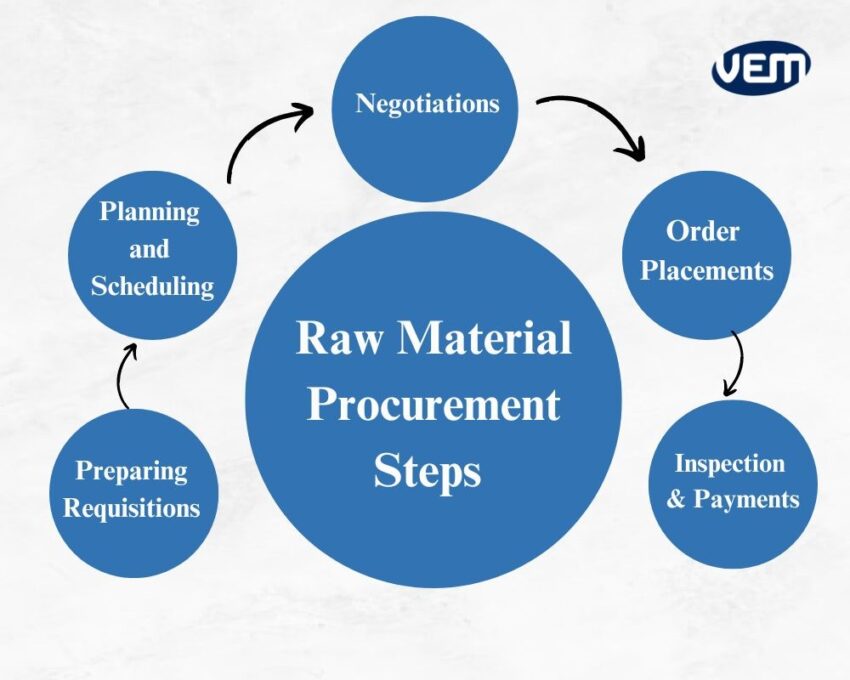
You should note that the contracts for procuring materials may differ from one another. There are various factors that are considered to be included in these contract types and it is important to stay on top of them! By keeping these factors in check, you can avoid the usual pitfalls that are associated with contracts. Let’s take a look at some of the key factors that help to manage time and material contracts:
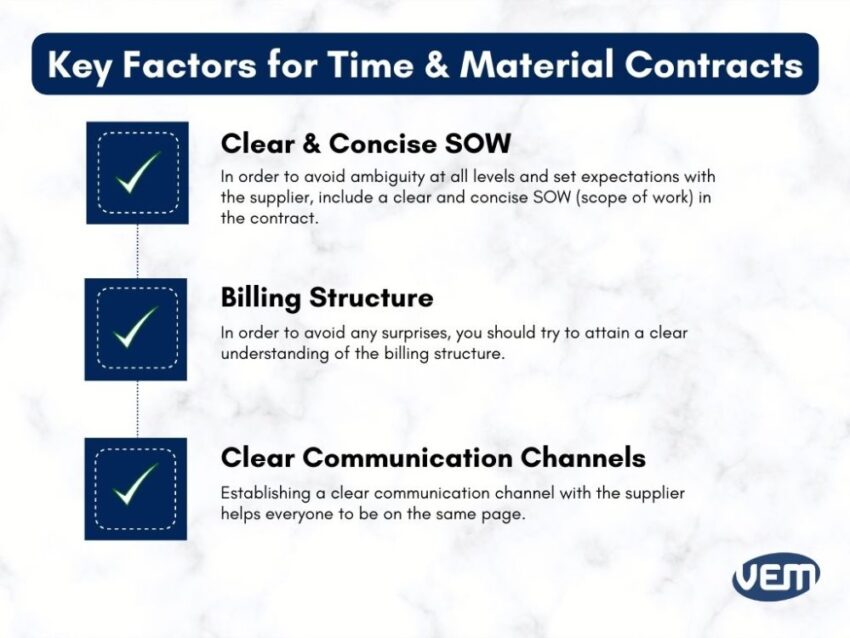
In order to avoid ambiguity at all levels, it is crucial to include a clear and concise SOW (scope of work) in the contract. This ensures that the expectations with the supplier are set. A detailed SOW outlines all deliverables, timelines, and milestones of the project.
In order to avoid any surprises with respect to time and material contracts, you should try to attain a clear understanding of the billing structure. It is important to understand that along with material costs there can also be other costs involved, such as fulfillment, servicing, etc.
The next key point is to establish a clear communication channel with the supplier. This helps everyone to be on the same page and it helps to solve any queries or concerns, quickly and efficiently.
Procurement leaders consider various factors for selecting the best raw materials in order to optimize efficiency and get the best value for their organizations. You need to ensure that not only are the raw materials of the highest quality, but they are also cost-effective and continually available. Let’s further take a look at these factors:
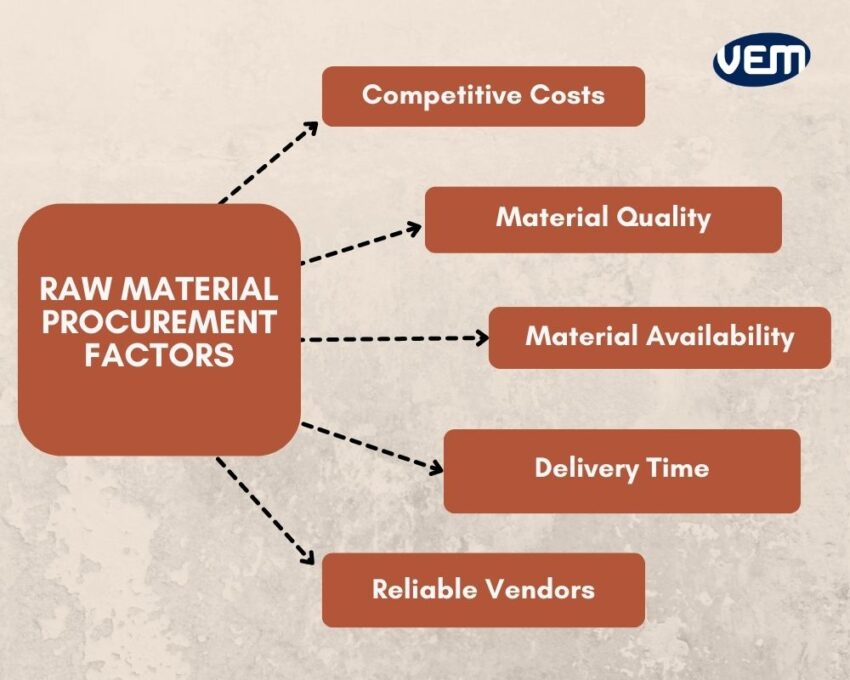
In order to be cost-effective, organizations want the best price possible for the materials they purchase thus, competitive pricing is a primary factor. In order to get competitive pricing for your materials, it is crucial to compare prices from various suppliers, negotiate for the best pricing, and observe strategic sourcing.
The next factor that is equally necessary to consider along with the cost is ‘Material Quality’ as this factor directly affects the product quality. Raw material quality is directly proportional to the quality of the product being manufactured. If the project requires that high-quality parts be produced, then the raw material needs to be of high quality. In such cases, competitive costs become a secondary factor.
Material availability is the next factor that influences the stability of ‘raw material procurement’. Material availability is dependent upon the vendor. It is crucial to ensure that the vendors you shortlist for your company will deliver the materials timely, consistently, and readily. If this is not ensured, then it can disrupt the entire supply chain.
You want to ensure that the products you manufacture are delivered as per the schedule! Thus, it is important to understand these expectations and include expected delivery dates in your vendor contracts.
Procurement of raw materials can be further, divided into 2 types – Direct and Indirect. They can be acquired to produce products or they can be items that are required to complete a product. Let’s understand these 2 types of segments further:
‘Direct procurement’ is when items or materials are an integral part of the manufacturing process and the finished product. This type of procurement is critical to the management of the supply chain and can significantly impact an organization’s bottom line!
‘Indirect procurement’ is when the materials are used for manufacturing but are not incorporated into the making or the production of the final product. Some examples of indirect materials or items are:
Raw material procurement is a crucial process in the manufacturing industry for the following reasons:
It helps to reduce costs by consolidating purchases into systematic transactions.
There are 3 main categories of raw material procurement: Primary, Secondary, and Tertiary. Let’s take a look at these categories:
Sourcing the right raw material is one of the most important steps in manufacturing. Since it’s one of the precursor steps, it sets the foundation for the entire production process! Thus, it’s crucial to have a thorough understanding of the various raw materials types. Each raw material type has unique properties and advantages. Let’s take a look at the most common types of raw materials:
Organic materials are made up of carbon-based molecules. They typically don’t include chemicals and are often preferred when high levels of quality or safety are a priority. For instance: The food industry, pharmaceuticals, and medical industry.
Inorganic materials include various types of materials that range everything from metals to rocks. They are used in various production areas such as creating chemicals, building roads and bridges, and making machines and tools.
Semi-product materials are generally composed of 2 or more types of materials. For instance: Coal is burned to create steam, which can be further transformed into fertilizer.
Raw materials outputs are produced from a particular type of raw material input. For instance: Aluminum is processed into cans, car parts, foil wrappers, and other consumer goods using steel as the raw material input.
Every Original Equipment Manufacturer (OEM) needs to implement effective strategies in order to procure raw materials in a cost-effective and efficient manner. You should note that effective raw material procurement is a skillful process! Let’s further understand the various strategies that you as a business owner or procurement leader can implement:
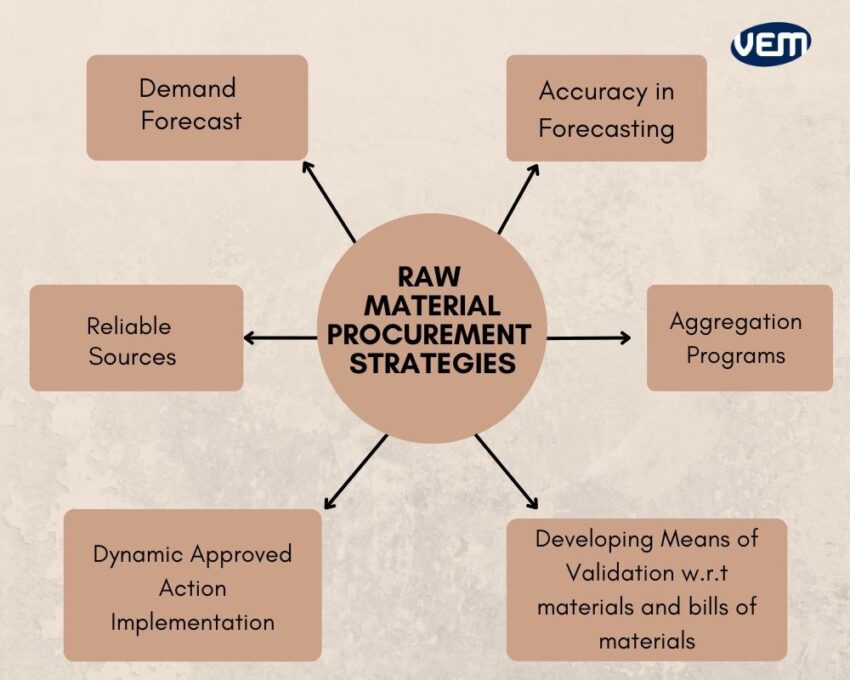
An effective strategy for successful raw material purchase is ‘demand forecasting’. It is crucial to understand the current and future requirements of the project and further, communicate the raw material demand forecast with all the stakeholders. Demand forecasting enables suppliers to be proactive and OEMs to have better control over pricing!
You should note that simply stating that you may require a particular material’s plate or sheet in bulk isn’t accurate forecasting. You should share the actual demand with precise details with the suppliers! This is often referred to as the ‘material demand profile’ which includes a defined order form preference (i.e. sheet vs plate or bar), specific sizes, and specifications.
This type of detailed forecast avoids all types of speculations and it also enables suppliers to stock up the inventory quantities in a timely manner. In addition, you can ask the following questions to ensure that your forecasting is accurate:
Aggregation programs are established when an Original Equipment Manufacturer enters into a standard raw material purchasing agreement with its suppliers and distributors. An aggregation program enables OEMs to have significant leverage over raw material suppliers. These programs enable OEMs to switch suppliers if they fail to deliver as per the agreement.
If a raw material supplier is unable to fulfill urgent orders that may arise in the supply chain, then the OEM can plan in advance to address potential delays.
It is crucial to include a means to validate the sizes, forms, and specifications of the materials. In addition, you should also ensure to keep the bills-of material up-to-date and provide an easy way to update or ‘validate’ bills of material.
It’s crucial to include a dynamic approach to monitor supplier action. They should only supply approved materials and if they supply in excess, then you should not be making extra payments. This can be achieved by implementing dynamic-approved actions.
It is crucial to ensure that your raw material sources are reliable. Today, there are various types of scams and OEMs often end up with low-quality raw materials if a thorough check hasn’t been performed. Thus, it’s imperative to check for reliable sources and buy raw materials only from a trusted supplier and manufacturer.
OEMs and businesses need reliable suppliers that can provide them with good quality raw materials on a timely and cost-effective basis. It’s important to analyze the available options thoroughly and choose the one that best fits the requirements.
You can explore the raw material procurement programs through the current systems in VEM-Tooling! We aim to improve all facets of the operations and ensure that the purchasing process is smooth and efficient.